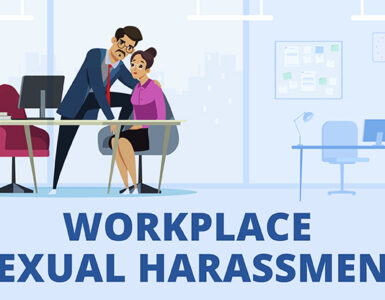What actions or behaviors do you believe could be considered as sexual harassment? Most of us have witnessed behaviors that could be considered sexual harassment in the workplace at one time or another – even if in a subtle form.
Think of a situation that made you feel particularly uncomfortable?
Sexual harassment and fun in the workplace, a very thin line separates the two. Sometimes… what’s offensive to one person isn’t so to another.
That’s the reason you need to read this article – to learn to recognize potential sexual harassment situations.
What is Sexual Harassment?
Any conduct of sexual nature – physical, verbal or visual – could be termed as sexual harassment if and when
- Submission to such conduct is made a term or condition for employment.
- Employment decisions – that affect the individual – are based upon submission to or rejection of such conduct.
- Such conduct creates a hostile work environment, interferes with an employee’s performance and affects the terms of an individual’s employment.
For ease of explanation, sexual harassment is classified as either quid pro quo or hostile environment.
Quid pro quo
Simply stated, Quid pro quo is – this for that. This type of harassment is usually perpetrated by a supervisor or other person in a position of authority. It’s about a disparity of power between two people – a supervisor/manager and a subordinate.
One example of quid pro quo is an employee who is threatened with a demotion (or promised a promotion) in exchange for sexual favors.
Actions and behaviors that would be considered harassment:
- Unwelcomed sexual advances,
- Requests for sexual favors
- Verbal or physical conducts of a sexual nature, such as lewd comments or inappropriate touching.
Hostile environment
The other form of sexual harassment is referred as Hostile environment harassment. Situations, where requests for sexual favors are severe enough to impact an employee’s work performance, unreasonably.
Consider a situation in which a person is subjected to sexual advances, or requests for sexual favors, or other verbal or physical behaviors of a sexual nature – and –
- The conduct is unwelcomed.
- The conduct is sufficiently severe to alter the conditions of the individual’s employment, and
- Creates an intimidating, hostile, or offensive working environment.
How do you recognize the behaviors that could be considered as sexual harassment?
Sexual harassment can be conducted in many different ways, including verbally, physically, or visually. Even gestures such as body movement that express sexually suggestive ideas can be considered as sexual harassment.
Examples of Verbal Harassment
- Repeated unsolicited propositions for dates and/or sexual intercourse.
- Suggestive comments.
- Implied or overt threats for a sexual favor.
- Comments or questions about the sensuality of a person, or his or her spouse or significant others.
- Off-color jokes
Examples of Non-Verbal Harassment
- Sexual advances
- Fondling
- Shoulder massages
- Pinching
- Grabbing
Examples of Visual Harassment
- Sexually suggestive pictures, photos, cartoons, screen savers.
- Lewd e-mails or texts.
- Sexually suggestive posts on social media.
Now that you have some idea of what sexual harassment prevention is- Here are a few questions for you-
- Are you familiar with your organization’s sexual harassment policy?
- Are you able to recognize sexual harassment?
- Do you know how to report sexual harassment, and to whom to report to?





